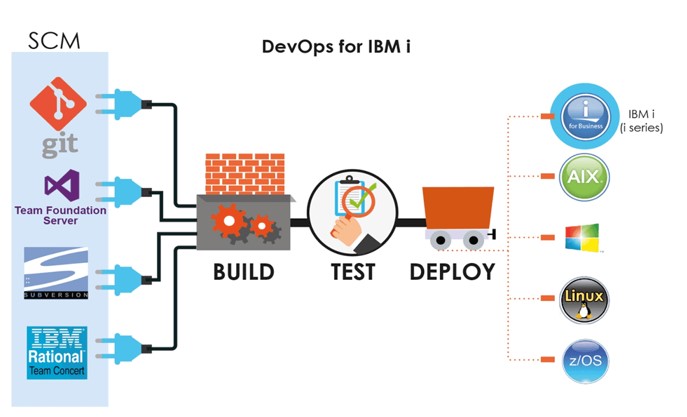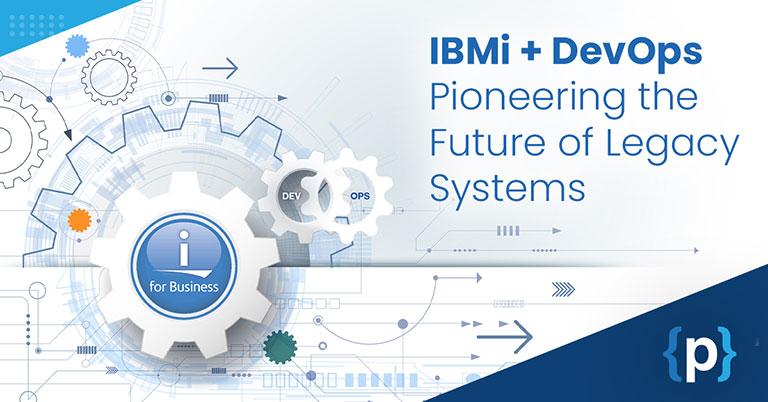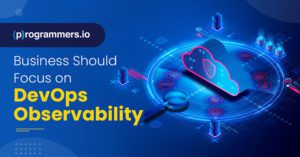In a world where technology evolves at breakneck speed,
Do you still view your IBM i as a legacy system?
Now……,
It’s time to change that perception and explore the world of DevOps.
What is DevOps?
There is no doubt that launching a product is the most critical and high-risk step in the Software Development cycle, with a direct impact on the availability of applications and the continuity of the business.
Previously, the deployments were scheduled monthly, quarterly, half-yearly, or sometimes yearly due to manual processes.
DevOps aims to bridge the gap between development teams and operations teams. To accelerate software delivery and improve application reliability, it focuses on collaboration, automation, and a continuous feedback loop.
What is the Underlying Process?
Through DevOps, businesses can respond more rapidly to market changes by deploying high-quality software upgrades more frequently.
It involves using different types of tools to automate the work of various teams (e.g., developers, testers, operations, users).
This is the sequence that is initially being followed:
1. It all started with someone creating a change request.
2. As a next step, the DevOps team picks up the change request and assigns it to a developer.
3. After that, the developers analyze what needs to be changed and make recommendations.
4. Once the development is done, the Operation teams pick the request.
5. Test data, and the testing environment, are set up by the operation team to ensure that there will be no issues before the application goes live.
6. During deployment, it takes care of all technical processes.
The key principles of DevOps include:
- Automation: It automates build, test, and deployment processes to ensure consistency and reliability.
- Continuous Integration (CI): It Integrates code changes frequently to detect and resolve issues in the early development/testing
- Continuous Delivery (CD): It automates the code changes deployment to different environments, ensuring consistent and reliable
- Version Control: Version control is used to manage code changes and collaborate effectively with systems like Git.
- Testing: It is used to implement automated testing practices and steps to validate the code change and catch regressions.
- Tooling: It utilizes tools that are compatible with IBM i, like Jenkins and others to build pipelines.
- Documentation: It is used to maintain documentation for processes, configurations, and deployment
Read: Guide to Hire DevOps Developers

Getting Started with DevOps on IBM i
To embark on the DevOps journey with IBM i, consider the following steps:
- Assessment: Identify areas that need improvement and modernization in your systems, processes, and culture.
- Training: DevOps practices can be implemented more effectively if your IT staff is properly trained.
- Tooling: DevOps tools compatible with IBM i, such as Jenkins, Git, and Ansible, should be selected.
- Automation: Building, testing, and deploying applications should all be automated as much as possible.
- Start Small: Test and refine your DevOps processes before scaling.
- Culture Shift: Develop a culture of collaboration, communication, and continuous improvement to break down silos and support DevOps adoption.
- Monitoring and Feedback: Analyze production environments and make informed decisions based on monitoring and feedback.
Technological Components
- Ticketing tools – Service Now, Jira
- Development tools – RDi, VS code, Jenkins
- Change management tool – GitHub, Gitlab
- Version control for Git Source code – Bitbucket account (Cloud account)
**Note: A key difference between DevOps on IBM i and other platforms, is that IBM i development is server-based. So, developers are working together on the same server. DevOps became game changers in this segment where with the help of third-party tools, each developer can work on their PC, and at the end, they can upload it to the server. This also helped multiple developers to work on the same code.

DevOps on IBM i: Benefits and Challenges
Implementing DevOps on the IBM i platform can bring several advantages, including:
- Faster Delivery: DevOps practices enable faster development cycles, reducing time-to-market for new features and applications.
- Improved Quality: Continuous integration and automated testing help identify and fix issues early, leading to higher-quality software.
- Enhanced Collaboration: DevOps encourages collaboration between development, operations, and other teams, breaking down traditional barriers.
- Scalability: IBM i’s scalability can be fully leveraged with DevOps, allowing businesses to respond to changing demands efficiently.
However, there are also challenges to adopting DevOps on IBM i:
- Legacy Systems: Many organizations have legacy applications running on IBM i, which may require significant refactoring or reengineering to fit into a DevOps pipeline.
- Skill Gaps: Finding individuals with both IBM i and DevOps expertise can be challenging.
- Resistance to Change: Cultural resistance to change can be a significant hurdle, as some teams may be accustomed to traditional development and deployment processes.new ones, DevOps on
Conclusion
In conclusion, the journey of adopting DevOps on IBM i is not just about modernizing a legacy platform; it’s about unlocking the true potential of a system that has long been the backbone of many organizations. DevOps practices bring agility, efficiency, and collaboration to a platform known for its stability and reliability. As you embark on your DevOps journey with IBM i, remember that it’s not just about the tools and processes but also about fostering a culture of continuous improvement and learning. Whether you’re modernizing existing applications or developing new ones, DevOps on IBM i is your gateway to innovation and success.
So, seize this opportunity, empower your teams, and embark on the path of DevOps on IBM i. Embrace the future with confidence, knowing that your organization is well-equipped to thrive in the ever-evolving landscape of technology and business.




